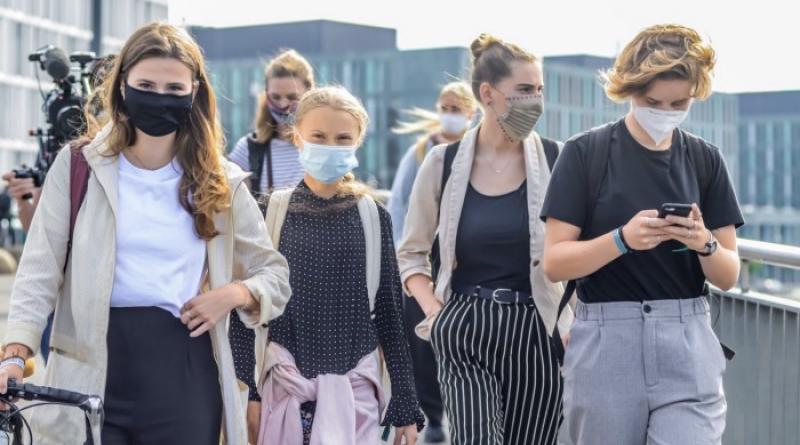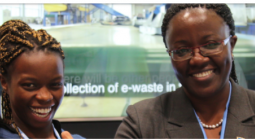The EU is cheating with numbers — and stealing our future.

”We know we’re not in line with the Paris Agreement, we never said we were. But we have to bring the public along slowly”.
Between the four of us, we have met quite a number of world leaders during the last two years and you’d probably be surprised to hear some of the things they say when the cameras and microphones are off. We could write lots of articles about this.
And trust us — we will.
One of humanity’s greatest, present threats is the belief that real sufficient climate action is being taken, that things are being taken care of — when in fact they’re not. Not at all. The time for ”little steps in the right direction” is long gone and yet this is — at best — exactly what our leaders are trying to achieve. They are literally stealing our future right in front of our eyes.
The proposed 55%, 60% or even 65% CO2 emission reduction targets for the EU by 2030 are nowhere near enough to be in line with the below 1.5°C or even the “well below 2°C” target of the Paris Agreement.
Our democracy is completely dependent on citizens being informed about issues that concern them, and it’s quite disturbing — to say the least — that this is not being accurately reported on. Especially since the climate emergency will decide the future of humankind. So here we have collected some key points that explain some of the reasons why these proposed targets are very far from enough. Please share them far and wide.
- The proposed reductions within the European Union are to be made from a 1990 baseline. As the EU has already — following a very slow emission reduction pace over the past 30 years — reduced its territorial emissions by about 23%, this means that the 55% reduction target announced by the EU commission, in fact is a 55% minus 23% from 1990s levels reduction until 2030. Based on today’s levels, this would mean an approximate reduction of our emissions by 42%. And this obviously translates to a serious reduction in ambition. Moreover, the EU’s reductions since 1990 have — to a large extent — happened due to us exporting our factories to other parts of the world. Let’s look at Sweden as an example, where consumption index numbers are fortunately made public by the authorities. Here the CO2 emissions have been lowered by approximately 27% since 1990. But, if we include the total consumption index (imported goods manufactured outside the country) as well as international aviation and shipping (always excluded in the official international reported numbers) the increase in these three make up for ALL the lowered emissions within the Swedish borders. So in fact Sweden’s emissions have not decreased at all. They have just exported them or hidden them with creative CO2 accounting — a policy used throughout Europe and the entire world. The key thing is: when EU leaders promise emission reductions of 55% by 2030 from 1990 levels’, they need to be honest right from the start, and communicate that this translates to a reduction of only about 42% from 2018’s levels. And of course even less from current levels, once you take into account the reductions that took place because of the corona tragedy. Leaders also need to be transparent that this goal only captures a part of total EU emissions — as the rest is imported and not accounted for. As explained in the next point.
- The proposed reductions do not include international aviation, shipping nor — again — consumption of goods manufactured outside the EU. So for instance, if your laptop is made in China, your shoes in Indonesia, your jeans in Bangladesh, your jacket in India, your coffee in Kenya, your smartphone in South Korea and your beef in Brazil — then basically none of that will appear as emissions within the EU. And a short train ride from Cologne to Aachen will result in more emissions that will be counted as EU’s responsibility than a flight to Buenos Aires or Bangkok and back again. This problem will not be ”fixed” by the vague proposal of future Border Carbon Adjustments (BCA). EU’s reduction targets and statistics must include all of the EU’s emissions.
- The proposed reductions do not include the aspect of equity, which is absolutely essential for making the Paris Agreement work on a global level. The nations of the EU have clearly signed up to lead the way and to give low- and middle income countries a chance to build some of the infrastructure that we have already built — most of it by using fossil fuels during the last two centuries. Such as roads, hospitals, clean drinking water, schools, electricity and so on. If we fail to lead and go first like we’ve promised — then how can we expect that countries like China and India will do their fair share?
- The popular idea of cutting our emissions in half by 2030 (from 2010, not the EU favorable 1990 baseline…) is based on a carbon budget that only gives us a 50% chance of staying below 1.5°C. But these odds assume that natural ecosystems, the ocean and the ice sheets remain stable, i.e. do not cross tipping points triggering feedback loops that would accelerate warming. Such as the emissions from wildfires, forest dieback from disease and drought, the albedo effect from disappearing sea ice or the rapidly thawing arctic permafrost with the release of methane. Nor do these odds include already locked in warming hidden by toxic air pollution which alone could be as high as 0.5–1.1°C. Or the aspect of equity. It does however rely on future removal of enormous amounts of CO2 from the atmosphere with technologies that are very unlikely to exist at the scale assumed in time. So the 50% chance is in reality much less than a 50% chance.
There are of course other loopholes in the EU reduction proposal, like the brand new business-as-usual-argument of including carbon sinks in the targets along the way to “net zero”. In other words: using the existence of forests as an excuse for not cutting emissions.
“Including sinks means that the new 55% target would effectively be less than 50% in the current target’s terms”, says climate scientist Bert Metz, who co-chaired the mitigation working group of the UN Intergovernmental Panel on Climate Change from 1997 to 2008. Others suggest the difference is more like 2%.
So: 55% minus 23% from 1990s levels, minus consumption of imported goods, international aviation and shipping, minus another 2-5% is… well, subtracting percentages can be a bit of a mathematical challenge — but you get the general idea. The point is, there are a lot of subtractions from that original 55%, 60% or 65% by 2030 targets.
No doubt the EU commission will argue that a 1990 baseline is ”fair”, “ 1990 has always been the base year for EU headline climate targets” and “why should the EU be punished for starting to reduce our emissions 30 years ago?” Well, the answer is that in reality we didn’t start reducing our emissions back then. We simply moved them abroad and excluded large parts of them from the official numbers.
And the idea that some nations and regions should be allowed special treatment will no doubt seriously jeopardize the entire Paris Agreement.
There can be no social justice without climate justice. And there can be no climate justice unless we acknowledge the fact that we have dumped large parts of our emissions overseas, exploiting cheap labour and poor working conditions as well as weaker environmental regulations.
Because not only are the ones least responsible for the climate crisis suffering its consequences the most — we are now also blaming them for our emissions, as they are the ones producing the stuff we buy.
Even though every reduction of CO2 emissions is most welcome, the proposals from the EU Commission and Parliament are very, very far from being enough. And yet the debate is still nowhere to be seen. This has got to change if we are to have at least a small chance of avoiding a climate catastrophe that can soon not be undone.
Our leaders need to face the climate emergency instead of creating new loopholes while building their so called ”pledges” on the cheating tactics that got us into this mess.
Let’s be clear. What all these proposed targets and commitments come down to is, us — most likely — losing the small remaining window of opportunity to stay in line with the Paris Agreement. What we need — to begin with — is to implement annual binding carbon budgets based on the current best available science and stop pretending that we can solve the climate- and environmental crisis without treating it as one. As we explain further in our open letter.
About one third of our global fossil fuel CO2 emissions have been emitted since 2005. Over fifty percent have occurred since 1990. Our annual emissions are now so high that every single year of ‘business as usual’ will impact the future living conditions for countless generations, as well as people living in the most affected areas today. Our current leaders are responsible. And if we continue to leave this only to scientists, NGOs and activists to communicate then we will fail.
For over two years we have been repeating our message: listen to the science, act on the science. But the message is clearly not getting through. The science is still being ignored.
The justice for the most affected people in the most affected areas is being systematically denied.
The climate emergency is rapidly spinning out of our control. If we are to have a chance then this needs to become our main focus. It must dominate the news, politics and our entire society. Starting today.
Photo: François Dvorak
5 October 2020
Medium




